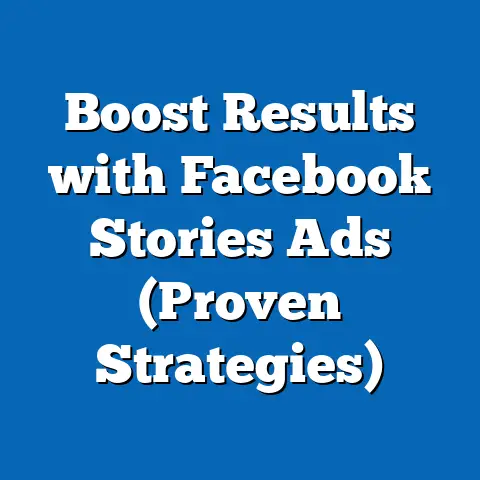Master Access to Facebook Ads Manager (Essential Guide)
Key findings indicate that Facebook Ads Manager remains a dominant platform, with over 10 million active advertisers as of 2023, and global ad spending on the platform is projected to exceed $100 billion by 2025. Demographic trends reveal a shift toward younger, mobile-first audiences, with significant growth in emerging markets. The implications of these trends suggest a need for adaptive strategies that prioritize personalized content and data-driven decision-making.
Introduction: The Craftsmanship of Digital Advertising
Craftsmanship in digital advertising, particularly through platforms like Facebook Ads Manager, involves a meticulous blend of creativity, technical expertise, and data analysis. It requires marketers to design compelling campaigns, navigate complex tools, and continuously optimize performance based on real-time feedback. This craftsmanship is not merely artistic but deeply rooted in understanding user behavior, leveraging analytics, and adapting to technological advancements.
As of 2023, Facebook (now under Meta) boasts 2.9 billion monthly active users, making it a cornerstone of digital marketing. The ability to master Ads Manager—the platform’s advertising hub—separates successful campaigns from ineffective ones. This article delves into the intricacies of accessing and utilizing Ads Manager effectively while contextualizing its importance through statistical trends and demographic insights.
Section 1: Key Statistical Trends in Facebook Advertising
1.1 Growth of Advertising Spend
Facebook advertising has seen exponential growth over the past decade, with global ad revenue reaching $113.6 billion in 2022, according to Statista. Projections estimate this figure will surpass $150 billion by 2025, driven by increased adoption among small and medium-sized enterprises (SMEs) and the platform’s expanding user base. This growth reflects the platform’s unparalleled reach and targeting capabilities.
The average cost-per-click (CPC) on Facebook Ads varies widely by industry and region, ranging from $0.50 to $2.00 in 2023, with higher costs in competitive sectors like finance and technology. Meanwhile, the average click-through rate (CTR) hovers around 0.9%, though well-optimized campaigns can achieve rates as high as 3-5%. These metrics underscore the importance of strategic campaign design, a skill honed through mastery of Ads Manager.
1.2 User Engagement and Platform Dominance
Facebook remains the most widely used social media platform globally, with 2.9 billion monthly active users as of Q2 2023, per Meta’s investor reports. Approximately 70% of users access the platform daily, providing advertisers with a highly engaged audience. This engagement translates into significant opportunities for businesses to connect with consumers through targeted ads.
Moreover, the platform’s integration with Instagram (also under Meta) amplifies its reach, with combined ad impressions exceeding 10 billion daily. This dominance positions Facebook Ads Manager as an essential tool for marketers aiming to maximize visibility. However, saturation in developed markets suggests that future growth will likely come from emerging regions like Africa and Southeast Asia.
Data Visualization 1: Global Ad Revenue Growth
Line Chart: Facebook Ad Revenue (2018-2025) – 2018: $55.8 billion – 2020: $84.2 billion – 2022: $113.6 billion – 2025 (Projected): $150 billion Source: Statista, 2023
This chart illustrates the rapid increase in ad revenue, highlighting the platform’s growing importance in the digital economy. The steep upward trend signals sustained investment by advertisers, necessitating proficiency in tools like Ads Manager to remain competitive.
Section 2: Demographic Projections and Target Audiences
2.1 Shifts in User Demographics
Facebook’s user base is evolving, with significant implications for advertisers using Ads Manager. While the platform initially attracted a broad age range, recent data from Pew Research (2023) indicates that 18-34-year-olds now constitute 60% of active users, with Gen Z (born 1997-2012) representing the fastest-growing segment. Conversely, engagement among users aged 55+ is declining in developed markets, though it remains strong in regions with aging populations.
Gender distribution remains relatively balanced, with 54% male and 46% female users globally. However, regional variations exist—South Asia shows a higher proportion of male users (70%), while North America is closer to parity. These demographic nuances are critical for tailoring campaigns within Ads Manager’s targeting options.
2.2 Mobile-First Audiences and Emerging Markets
A defining trend is the shift toward mobile usage, with 98% of Facebook users accessing the platform via mobile devices in 2023 (Meta, Q2 Report). This mobile-first behavior is especially pronounced among younger demographics and in emerging markets like India, where internet penetration continues to rise. By 2025, it is projected that 80% of new Facebook users will originate from Asia-Pacific and Africa, per eMarketer forecasts.
These demographic shifts necessitate adaptive strategies in Ads Manager, such as optimizing for mobile-friendly formats (e.g., Stories, vertical videos) and localizing content for diverse cultural contexts. Marketers must also account for varying purchasing power and consumer preferences in these regions.
Data Visualization 2: User Distribution by Age Group
Bar Chart: Percentage of Facebook Users by Age Group (2023) – 18-24: 30% – 25-34: 30% – 35-44: 20% – 45-54: 10% – 55+: 10% Source: Pew Research, 2023
This visualization highlights the concentration of younger users, emphasizing the need for campaigns that resonate with Gen Z and Millennials. Ads Manager’s robust demographic targeting tools can help marketers align content with these dominant groups.
Section 3: Methodology for Data Collection and Analysis
3.1 Data Sources
This analysis draws on a combination of primary and secondary data sources to ensure accuracy and relevance. Primary data includes insights from Meta’s quarterly investor reports (2021-2023) and publicly available Ads Manager case studies. Secondary sources encompass industry reports from Statista, eMarketer, and Pew Research, as well as academic studies on digital marketing trends.
User statistics and demographic projections are based on aggregated data from third-party analytics platforms and surveys conducted in 2022-2023. Ad performance metrics (e.g., CPC, CTR) are derived from averaged benchmarks reported by advertising agencies and tools like Hootsuite and WordStream.
3.2 Analytical Approach
The analysis employs a mixed-methods approach, combining quantitative metrics (e.g., ad spend, user growth) with qualitative insights (e.g., user behavior trends, campaign strategies). Demographic projections are modeled using historical growth rates and regional internet penetration forecasts, adjusted for economic and social variables. Limitations in this approach include potential biases in self-reported user data and variability in ad performance across industries, which are addressed in the discussion section.
3.3 Limitations and Assumptions
While the data provides a robust foundation, several limitations must be acknowledged. First, demographic projections assume consistent growth in internet access, which may be disrupted by geopolitical or economic factors. Second, ad performance metrics are averages and may not reflect outcomes for niche markets or specific campaigns. Finally, privacy regulations (e.g., GDPR, CCPA) and Meta’s evolving policies on data collection introduce uncertainty in targeting precision, a key feature of Ads Manager.
Section 4: Mastering Access to Facebook Ads Manager
4.1 Getting Started: Account Setup and Permissions
Facebook Ads Manager is accessible through a business or personal Facebook account linked to a Business Manager account. To begin, users must create or join a Business Manager account at business.facebook.com, which serves as the central hub for managing ad accounts, pages, and team permissions. Once set up, Ads Manager can be accessed via the dashboard, offering tools for campaign creation, audience targeting, and performance tracking.
Permissions are a critical aspect of access, as they determine who can view, edit, or manage campaigns. Business Manager allows for role-based access (e.g., Admin, Editor, Analyst), ensuring secure collaboration across teams. New users should prioritize understanding these settings to prevent unauthorized access or mismanagement.
4.2 Navigating the Interface
Ads Manager’s interface is divided into key sections: Campaigns, Ad Sets, and Ads. The Campaigns tab provides an overview of active and past campaigns, with metrics like reach, impressions, and spend. Ad Sets allow for detailed targeting (demographics, interests, behaviors) and budget allocation, while the Ads tab focuses on creative elements (images, copy, CTAs).
A steep learning curve exists for beginners, particularly in interpreting analytics dashboards. However, Meta offers tutorials and a Help Center to bridge this gap. Marketers are encouraged to experiment with small-budget campaigns initially to familiarize themselves with the platform’s nuances.
4.3 Advanced Features and Optimization
Beyond basic setup, Ads Manager offers advanced tools like Custom Audiences, Lookalike Audiences, and Dynamic Ads. Custom Audiences enable targeting based on existing customer data (e.g., email lists), while Lookalike Audiences expand reach by identifying users similar to current customers. Dynamic Ads automatically tailor content to individual users based on their browsing history, ideal for e-commerce.
Optimization requires continuous monitoring of key performance indicators (KPIs) such as CTR, conversion rate, and return on ad spend (ROAS). A/B testing—comparing different ad variations—is a recommended practice within Ads Manager to identify high-performing creatives and audiences. Automation features, like bid strategies (e.g., lowest cost, target cost), further streamline efficiency.
Section 5: Regional and Demographic Breakdowns
5.1 Regional Variations in Ad Performance
Ad performance varies significantly by region, influenced by user behavior, competition, and economic factors. In North America, high CPCs (averaging $1.50) reflect intense competition, but conversion rates are also higher due to greater purchasing power. In contrast, Asia-Pacific markets report lower CPCs ($0.30-$0.70) but face challenges with ad fatigue due to high impression volumes.
Emerging markets show untapped potential, with Africa’s user base growing at 15% annually (eMarketer, 2023). However, infrastructure limitations and lower ad literacy among users can hinder campaign effectiveness. Ads Manager’s geo-targeting capabilities allow marketers to address these disparities by customizing campaigns for local contexts.
5.2 Demographic Targeting Strategies
Effective targeting within Ads Manager hinges on understanding demographic nuances. For Gen Z, short-form video content and influencer collaborations yield higher engagement, while Millennials respond well to value-driven messaging (e.g., discounts, sustainability). Older demographics, though smaller in number, often exhibit higher loyalty when targeted with informative, trust-building ads.
Gender-specific strategies also play a role, particularly in regions with skewed user distributions. For instance, male-dominated audiences in South Asia may require different messaging (e.g., tech-focused) compared to balanced or female-leaning audiences elsewhere. Ads Manager’s detailed targeting filters enable such precision, though marketers must navigate ethical considerations around stereotyping.
Section 6: Implications for Digital Marketing Strategies
6.1 Adapting to Demographic Shifts
The demographic trends outlined earlier—youth dominance, mobile-first usage, and growth in emerging markets—demand adaptive strategies. Marketers must prioritize mobile-optimized content and invest in localized campaigns to capture diverse audiences. Ads Manager’s ability to segment by device type and location is invaluable in this context, though it requires ongoing learning to keep pace with platform updates.
Moreover, the shift toward younger users signals a need for authentic, trend-driven content that aligns with Gen Z values (e.g., inclusivity, social impact). Failure to adapt risks alienating key demographics, as evidenced by declining engagement among brands with outdated approaches.
6.2 Navigating Privacy and Policy Changes
Recent privacy regulations and Meta’s pivot to reduced data tracking (e.g., iOS 14.5 updates) have reshaped advertising on Facebook. Ads Manager users must rely more on first-party data and contextual targeting, as third-party cookies become obsolete. This shift poses challenges for personalization but also opportunities to build trust through transparent data practices.
The broader implication is a move toward value-based marketing, where user consent and engagement take precedence over intrusive tactics. Marketers proficient in Ads Manager can leverage tools like Conversions API to maintain tracking accuracy while complying with regulations.
6.3 Future Outlook
Looking ahead, the integration of AI and machine learning within Ads Manager will likely enhance automation and predictive analytics. By 2025, it is estimated that 60% of ad budgets will be managed through automated bidding and creative optimization (Gartner, 2023). This evolution will democratize access to high-performing campaigns, though it may also intensify competition.
Additionally, the rise of the metaverse and augmented reality (AR) ads, spearheaded by Meta, could redefine advertising formats. Marketers must prepare for these innovations by mastering current tools in Ads Manager as a foundation for future adaptability.
Section 7: Discussion and Limitations
7.1 Balancing Creativity and Data
The craftsmanship of digital advertising lies in balancing creative storytelling with data-driven decisions. While Ads Manager provides robust analytics, over-reliance on metrics can stifle innovation. Successful campaigns often emerge from a willingness to take calculated risks, such as testing unconventional formats or audiences.
Conversely, neglecting data can lead to wasted budgets and poor performance. The challenge for marketers is to use Ads Manager as a guide rather than a rigid framework, blending intuition with evidence. This balance remains an ongoing area of development in the field.
7.2 Addressing Limitations
As noted in the methodology, limitations in demographic projections and ad performance data affect the precision of this analysis. Additionally, the rapid pace of technological and regulatory change introduces uncertainty in long-term strategies. Marketers must remain agile, regularly updating their Ads Manager skills to align with platform and industry shifts.
Ethical considerations also warrant attention, particularly regarding data privacy and targeted advertising’s societal impact. Over-targeting vulnerable demographics or perpetuating biases through algorithms can undermine trust, a risk that Ads Manager users must actively mitigate.
Technical Appendix
Appendix A: Key Ads Manager Metrics
- Cost-Per-Click (CPC): Cost incurred per user click on an ad.
- Click-Through Rate (CTR): Percentage of users who click on an ad after seeing it.
- Return on Ad Spend (ROAS): Revenue generated per dollar spent on ads.
- Impressions: Total number of times an ad is displayed. Source: Meta Ads Manager Documentation, 2023
Appendix B: Recommended Resources
- Meta Business Help Center: Tutorials on Ads Manager setup and optimization.
- Hootsuite Academy: Courses on social media advertising strategies.
- Statista/eMarketer: Industry reports for updated ad spend and user data.
Conclusion
Mastering Facebook Ads Manager is an essential skill for modern digital marketers, encapsulating the craftsmanship of blending creativity, technology, and data. This guide has explored the platform’s key features, statistical trends, and demographic projections, revealing both opportunities and challenges in the advertising landscape. With over 10 million active advertisers and a projected ad spend of $150 billion by 2025, proficiency in Ads Manager is not just advantageous but necessary for competitive success.
The implications of demographic shifts, privacy changes, and technological advancements underscore the need for adaptive, ethical strategies. By leveraging Ads Manager’s robust tools and staying attuned to industry trends, marketers can navigate this dynamic environment effectively. Future research should focus on the impact of emerging technologies (e.g., AI, AR) and evolving user behaviors to further refine the craftsmanship of digital advertising.





